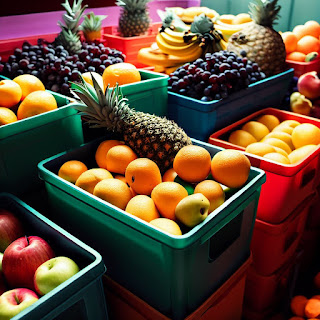More Binning
A Beginner's Guide to Data Binning and Categorization in Pandas
Introduction
When you're new to Python and data analysis, terms like "data binning" or "categorization" might seem daunting. But don't worry! This guide will walk you through these concepts using simple examples.
Generating Random Data
import random
import pandas as pd
def generate_random_series():
return pd.Series([random.randint(0, 100) for x in range(15)])
We start by importing the necessary modules and then define a function that generates a Pandas Series of 15 random integers between 0 and 100.
Binning with Custom Ranges
ages = generate_random_series()
bins = [10, 20, 30, 40, 50, 60, 70, 80, 90, 100]
age_bins = pd.cut(ages, bins)
age_bins.value_counts()
The pd.cut() function bins the random ages into custom age groups defined by the list bins. The value_counts() method shows the frequency distribution of these binned ages. Below are the results:
Binning with Custom Labels
bins = (18, 25, 35, 60, 100)
group_names = ['Youth', 'YoungAdult', 'MiddleAged', 'Senior']
age_bins = pd.cut(ages, bins, labels=group_names)
age_bins.value_counts()
This time, we not only specify the bin edges but also give them custom labels using the labels parameter. This provides a more meaningful categorization. Below are the results:
The Dilemma of Missing Categories
meat_to_animal = {
'bacon': 'pig',
'pulled pork': 'pig',
'pastrami': 'cow',
'corned beef': 'cow',
'honey ham': 'pig',
'nova lox': 'salmon'
}
df['animal'] = df['food'].map(str.lower).map(meat_to_animal)
print(df)
Here, we attempt to map food items to their corresponding animal origins using the meat_to_animal dictionary. However, the dictionary lacks an entry for 'pork', which is present in our original DataFrame.
When the code runs, Pandas tries to map each food item in the 'food' column to an animal in the 'animal' column. Since 'pork' is missing in our dictionary, its corresponding entry in the new 'animal' column becomes a NaN (Not a Number), which essentially means "missing" or "undefined".
This creates two problems:
- It introduces missing values into our DataFrame, which may lead to inaccurate analyses.
- It obscures the fact that a mapping failed, unless we are explicitly checking for it. In a large dataset, such missing values can easily go unnoticed, introducing errors in downstream analyses.
Therefore, handling missing or unmatched categories is crucial for robust data analysis.
Mapping Data to Categories
data = {'food': ['pork', 'pulled pork', 'bacon', 'pastrami', 'corned beef', 'honey ham', 'nova lox', 'bacon', 'nova lox'],
'ounces': [4, 3, 12, 6, 7.5, 8, 3, 5, 6]}
df = pd.DataFrame(data)
We create a DataFrame with food items and their corresponding ounces. The next step is categorizing these foods based on the animal they come from.
meat_to_animal = {
'bacon': 'pig',
'pulled pork': 'pig',
'pastrami': 'cow',
'corned beef': 'cow',
'honey ham': 'pig',
'nova lox': 'salmon'
}
df['animal'] = (df['food'].str.lower()
.map(meat_to_animal, na_action='ignore')
.fillna('Other'))
We create a mapping dictionary and use the Pandas chaining method to map food items to animals. Unmatched items are automatically labeled as 'Other'.
Handling Unmatched Data with Custom Functions
meat_to_animal = {
'bacon': 'pig',
'pulled pork': 'pig',
'pastrami': 'cow',
'corned beef': 'cow',
'honey ham': 'pig',
'nova lox': 'salmon',
'pork': 'pig'
}
df['animal'] = df['food'].map(str.lower).map(meat_to_animal)
print(df)
In this section, we extend the dictionary to include 'pork' mapping to 'pig'. Then, we map the 'food' column to 'animal' using the extended dictionary. The code first transforms the 'food' entries to lowercase and then maps them to their corresponding animal based on the dictionary.
def map_food_to_animal(food):
try:
return meat_to_animal[food.lower()]
except KeyError:
print(f"Warning: {food} did not match any key in the dictionary!")
return food
df['animal'] = df['food'].map(map_food_to_animal)
Here, we define a custom function map_food_to_animal that takes a 'food' item as an argument. Inside the function, we use a try-except block. If the function successfully maps the food to an animal, it returns the corresponding animal. If the mapping fails (i.e., the food item isn't in the dictionary), it prints a warning and returns the original food item.
Finally, we apply this custom function to the 'food' column in the DataFrame, ensuring that any unmatched food items will trigger a warning, making the analysis more robust.
Conclusion
Data binning and categorization are fundamental techniques in data analysis. They help in segmenting data into manageable and understandable parts. Pandas provides a range of functions to make these tasks easy, even for beginners. Link to Google Colab.









Comments
Post a Comment